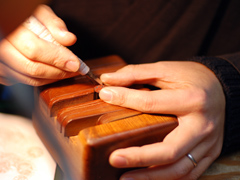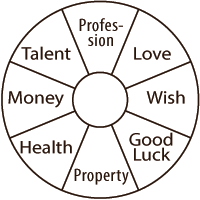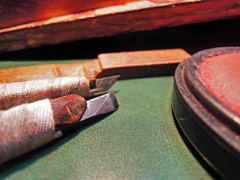
 Our crafting process is defined by the Insho Association as "Manual Finish", which is very uncommon in this day and age. This process is named for the purpose of distinction between "semi-manual" and real manual craftsmanship.
Our crafting process is defined by the Insho Association as "Manual Finish", which is very uncommon in this day and age. This process is named for the purpose of distinction between "semi-manual" and real manual craftsmanship.
So then how are these different? Product quality will be highly dependent on the artist's skill and sense. That is what we are most proud of and have the highest confidence in. And we have variety of original carving designs that machines are unable to handle.
All of the samples are made with actual products. If you want to know the skill of the carving artist, we recommend you ask if he or she can carve "Ten-Koin-Tai" or "Gyo-Koin-Tai". Those are not meant to be made by machine so you can use this question to check if its hand made.

In Japan, we use hanko (or often called inkan in more formal circumstances) for very important occasions and treat them as the other self. There is a study to get mathematical data to create the most fortunate hanko (seal) that brings good luck. It’s called “Inso-Gaku.”
Inso-tai font is also called “Happo-Sensho-tai” (happo means 8 directions) and it was created for hanko (seal) based on Sensho-tai font. Each stroke is stretched further to reach the rim of the hanko (seal).

This picture indicates the 8 directions and each direction has a different meaning. It is told that when you have the strokes touching the rim of the direction, you gain the luck of the subject.

How I Look at it
- Inso-tai should reach all the 8 directions in a good balance and moreover, it should give the impression that they are stretching beyond the rim.
- The harmony is most important and the true value is there.

